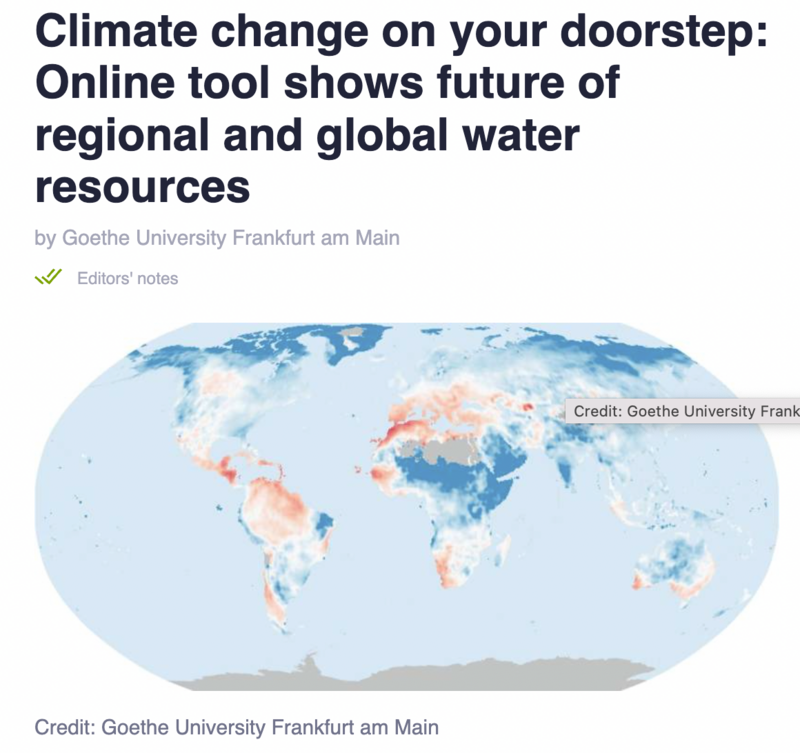Online tool shows future of regional and global water resources
Published on by Water Network Research, Official research team of The Water Network in Academic

Climate change is altering water availability—across the globe, and right on our doorstep. With a new interactive map, users can now see online how renewable water resources, groundwater recharge, and evapotranspiration might change in a specific region under various climate futures. The "Explorer for Climate Change Impacts on Water Resources" was developed by the Hydrology Working Group at Goethe University Frankfurt in cooperation with the French company AGEOCE.
"Water is one of the key resources of our future—with the Explorer, we are providing society with a tool to prepare for changes early and knowledge-based," says Prof. Petra Döll, head of the working group. The tool visualizes scientifically-based simulations of future water availability under the influence of climate change. It displays the results of a multi-model ensemble, i.e., the results of several global hydrological models driven by multiple climate models.
The application shows, for all land areas of Earth and with a spatial resolution of approximately 50 km, how groundwater recharge could change in different regions, whether to expect more or less overall water availability, and to what extent evapotranspiration increases due to the changing climate.
Users can select a specific region on the world map and receive a clear diagram showing projected changes between the reference period 1985 to 2014 and three future time periods. A particularly helpful feature is that the Explorer shows not only mean values but also the range of possible developments—depending on the emissions scenario and model uncertainties. This allows for less favorable developments to be considered and better incorporated into local planning.
Additionally, the Explorer can indicate how many of the models exceed certain thresholds—for example, a decrease in groundwater recharge by more than 20%. This helps assess how robust certain developments are and whether there is broad agreement among the models.
"Our application is based on simulation results from an international multi-model ensemble that makes climate impacts comparable across different levels," explains Dr. Fabian Kneier, research associate in the Hydrology Working Group, about transdisciplinary research. "We account not only for uncertainties in the climate projections but also in the hydrological models. This was only made possible through close collaboration between science and practice—across disciplinary boundaries."
Taxonomy
- Hydrology
- Water Resources
- Climate Change
- Climate Change Adaptation
- Hydrology
- international